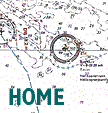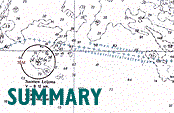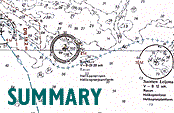 |
 |
 |
 |
CHAPTER 8 OBSERVATIONS AFTER THE ACCIDENT |
||
8.5.4 Ramp damageThe bow loading ramp was found slightly open, with a gap of about one metre at the top. The condition of the ramp was inspected primarily from its lower side due to the limited access to the upper side.
Figure 8.11 The failed port end hinge of the ramp surrounded by rags.
Various deep indentations were found on the beams on the lower side of the ramp, in particular towards the bottom end (Figure 8.12).
Figure 8.12 Indentations on a beam on the lower side of the ramp.
The ramp port side beam was damaged in several places, mostly towards the top end.
|
||
8.6 Damage to the visor and ramp attachment devices |
||
8.6.1 The visor bottom lockAll three attachment lugs for the bottom lock installation had failed (Figures 8.13 and 8.14). The locking bolt (Figure 8.15) remained attached to the actuating cylinder piston rod, which was bent (Figure 8.13). The remains of the attachment lugs and the locking bolt were removed from the wreck during the diving operation for close investigation.
Figure 8.13 Failed bottom lock installation.
Figure 8.14 Failed starboard and middle lugs for the bottom lock installation.
Figure 8.15 Locking bolt for the bottom lock installation.
It was noted that the weld beads between the lugs and the bolt housing and the support bushing respectively had failed partly in the bead itself and partly in the fusion zones. The steel plate of the lugs had failed in their thinnest sections, generally in a forward-upward direction. The two lugs for the bolt housing were twisted towards the port side.
Continues... |
||
 |
 |
 |
 |




